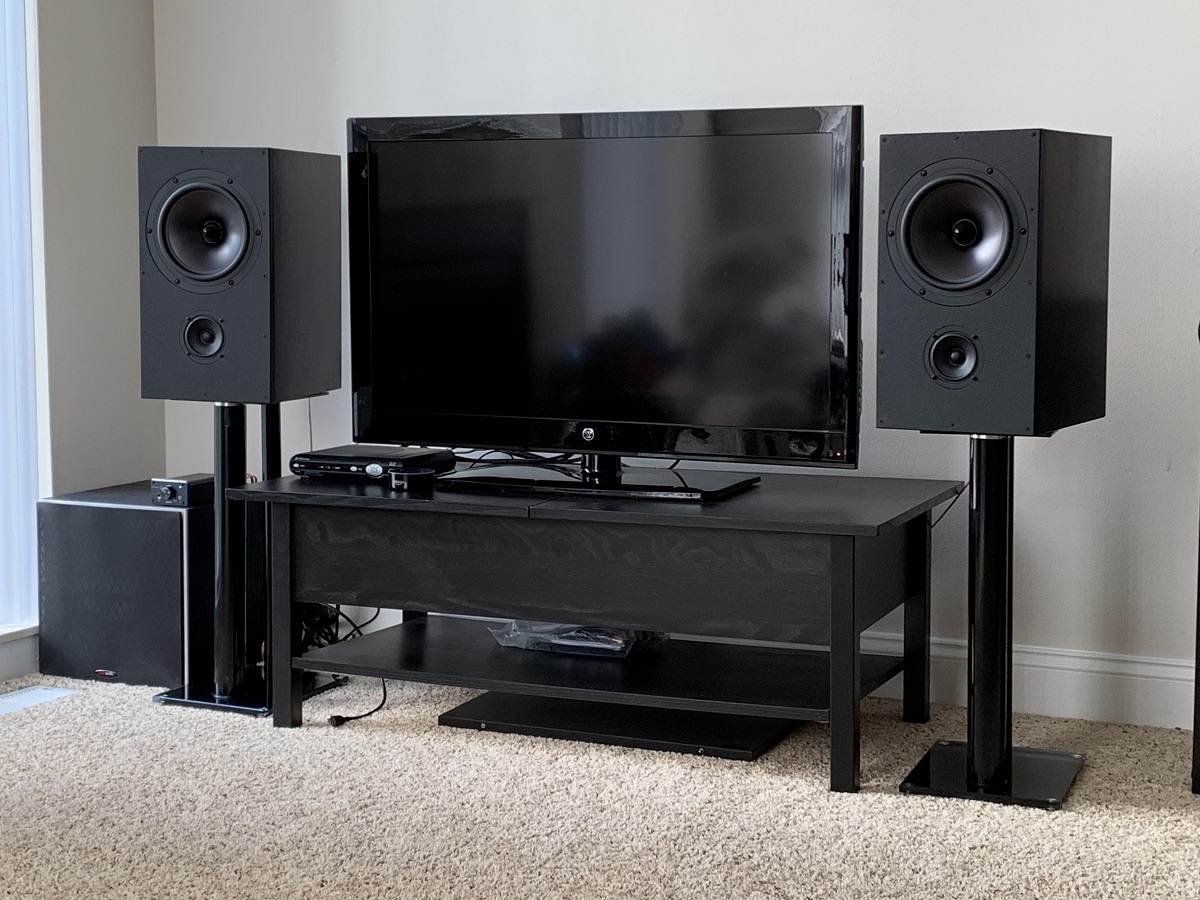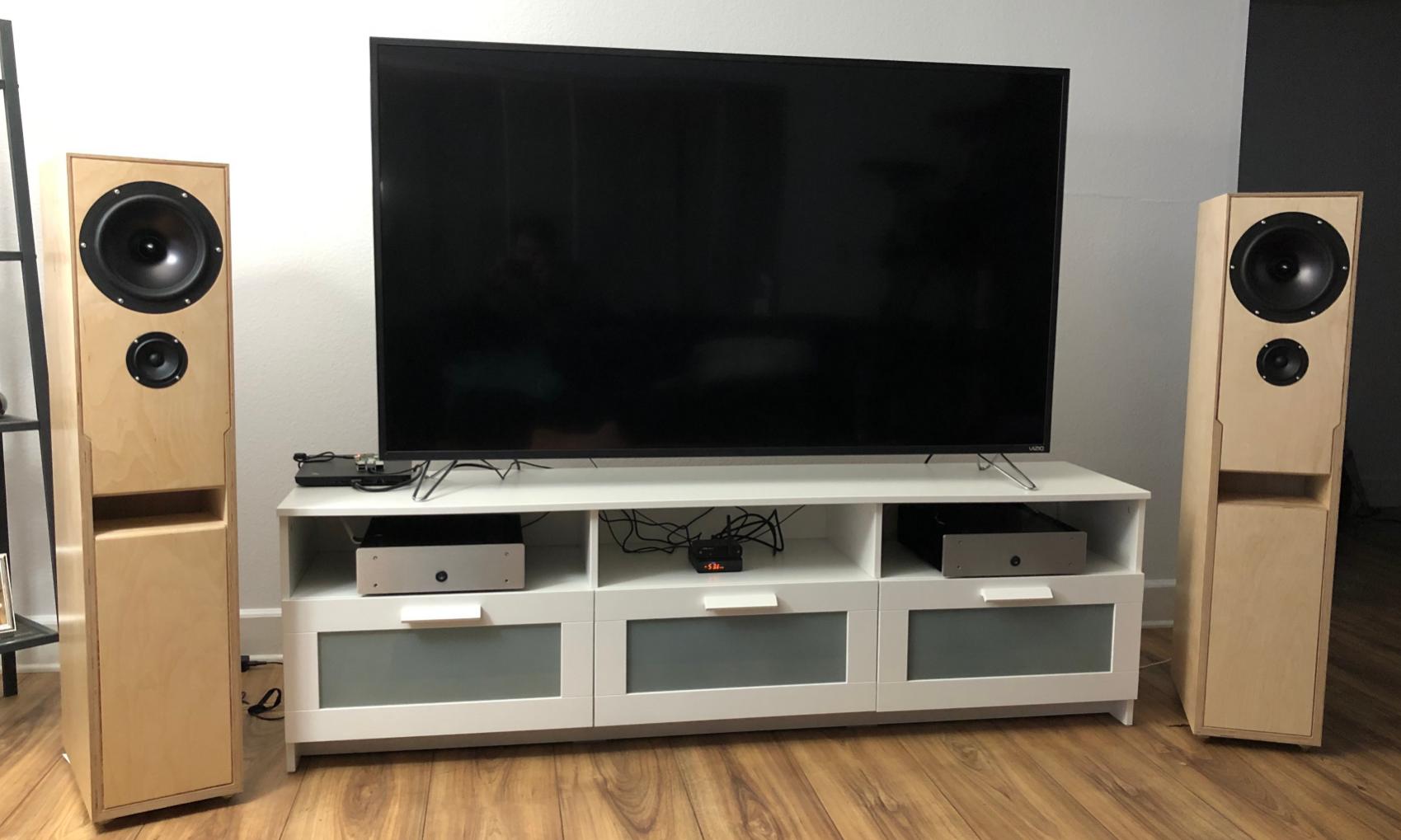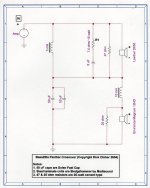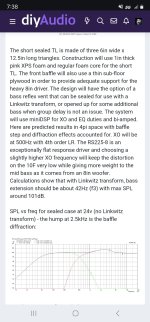I like that TB is using zero to 110dB scale, inspite 50dB scale being considered normal/practical.
Just a quick comment. This driver has a frequency response off-axis which is about the mirror of the on-axis frequency response. Together, they balance out the amount of treble radiated into the room. And you can tune the amount of treble by listening more or less on axis.
It is a very classic fullrange driver in that respect, this is one approach that has been known for ages, but works best with drivers with the right balance between on- and off-axis response.
There may be a part of the midrange where the off-axis response is too similar to the on-axis response. That can be balanced out by pulling that down a bit.
There are graphs for all these scenarios with this driver, but I am on the road and don't have time to find them.
It is a very classic fullrange driver in that respect, this is one approach that has been known for ages, but works best with drivers with the right balance between on- and off-axis response.
There may be a part of the midrange where the off-axis response is too similar to the on-axis response. That can be balanced out by pulling that down a bit.
There are graphs for all these scenarios with this driver, but I am on the road and don't have time to find them.
8' ~ 10' away and your sweet spot is about the size for a single listener.
Off axis you lose too much high end compared to 2khz.
And needing massive bass eq.
Off axis you lose too much high end compared to 2khz.
And needing massive bass eq.
Hi - if you use these drivers in a OB design, can you run them full-range without excessive excursion damaging the driver?
I know bass will be non-excitant, but if you just wanted to mess around and get some nice, pure mids. Thanks!
I know bass will be non-excitant, but if you just wanted to mess around and get some nice, pure mids. Thanks!
I am driving mine with an Amp Camp and they seem fine full range. My base drivers play up to 2500. The rare recording can have shrill highs but there is an easy filter for that.I like that TB is using zero to 110dB scale, inspite 50dB scale being considered normal/practical.
Last edited:
1mh + 4.7uf + 5 ohms (or whatever you want).
That helps with the nasal-ness.
Or is shrill higher than 2.5k ?
That helps with the nasal-ness.
Or is shrill higher than 2.5k ?
Anyone playing with these ?
I'm thinking 1 in a big .56 qtc sealed (when port stuffed anyway) as a center channel under my tv.
And yea, I've had 8" before and am well versed with their dispersion.
But couch wide, it should be fine for bringing out voices.
Looking here (post 25)
W8-1808 vs W8-2145
seems there is a lift in response past 1khz (above baffle step ?)
yet manufact freq response looks better than most 8's past 1khz (flatish).
W8-2145 - 8" Paper Full Range - TB SPEAKER CO., LTD.
Norman
I'm thinking 1 in a big .56 qtc sealed (when port stuffed anyway) as a center channel under my tv.
And yea, I've had 8" before and am well versed with their dispersion.
But couch wide, it should be fine for bringing out voices.
Looking here (post 25)
W8-1808 vs W8-2145
seems there is a lift in response past 1khz (above baffle step ?)
yet manufact freq response looks better than most 8's past 1khz (flatish).
W8-2145 - 8" Paper Full Range - TB SPEAKER CO., LTD.
Norman
- norman bates
- Replies: 97
- Forum: Full Range
Last edited:
I can play recordings praised by audiophiles without problems through these. But my hearing is far from perfect.
You know that my post and yours have nothing in common. I was pointing out that if fullrange speaker manufacturer wants to hide any breakup bumps and irregularities, they use very wide dB scale.I am driving mine with an Amp Camp and they seem fine full range. My base drivers play up to 2500. The rare recording can have shrill highs but there is an easy filter for that.
View attachment 1376103
Almost any fullrage will be close to perfect flat if you use 1000dB scale.
On the other hand using fullrange only as tweeter from 2.5kHz is missing all the benefits of fullrange. The point of fullrange is to cover as wide range as possible. I would cross it at 150Hz, no higher. That fullrage can easily handle that.
Maybe his 2145 is run wide open and the woof runs up to 2.5k ?
The popular rs225/10f project is basically a 2-way crossed at 900hz with a 6db crossover....
Basszilla open baffle actively crosses a Lowther dx4 6db/250hz, while the woof at 18db.
The popular rs225/10f project is basically a 2-way crossed at 900hz with a 6db crossover....
Basszilla open baffle actively crosses a Lowther dx4 6db/250hz, while the woof at 18db.
I don't know...Maybe his 2145 is run wide open and the woof runs up to 2.5k ?
The popular rs225/10f project is basically a 2-way crossed at 900hz with a 6db crossover....
Yup.
Basszilla open baffle actively crosses a Lowther dx4 6db/250hz, while the woof at 18db.
Actively?
Basszilla I know is passive.
https://www.blackdahlia.com/html/tip_49.html
Attachments
It says 500Hz here...The popular rs225/10f project is basically a 2-way crossed at 900hz with a 6db crossover....
Some sound clips of this speaker recorded with my phone and powered by my SuSyLu 100w Class A amp:
Test of SuSyLu 100W Class A Amp - YouTube
Example of speaker in dark “espresso brown” stain and satin lacquer with Duratex coated baffle.

Example of beautiful build by as8912:

Another Example of a...
Test of SuSyLu 100W Class A Amp - YouTube
Example of speaker in dark “espresso brown” stain and satin lacquer with Duratex coated baffle.
Example of beautiful build by as8912:
Another Example of a...
- xrk971
- Replies: 4,270
- Forum: Full Range
Attachments
Ah, ok.
1 of the basszillas is active.
https://www.blackdahlia.com/html/tip_56.html
A full range driver is its own thing, a balancing act between what you like the driver does well (to you) versus what you can tolerate it does badly.
Driver size, listening distance, room, setup, dispersion, music types, volume levels, detail, all sorts of variables....
Is a tweeter better ? Sure, but added cost, integration, losing some of the point source-ness.
Eq usually helps, especially mid-bass at low volumes.
1 of the basszillas is active.
https://www.blackdahlia.com/html/tip_56.html
A full range driver is its own thing, a balancing act between what you like the driver does well (to you) versus what you can tolerate it does badly.
Driver size, listening distance, room, setup, dispersion, music types, volume levels, detail, all sorts of variables....
Is a tweeter better ? Sure, but added cost, integration, losing some of the point source-ness.
Eq usually helps, especially mid-bass at low volumes.
Yes, the 2145 is run fullrange off the amp camp and the Dayton pro 10" woofer is run off an aca mini line level low passed at 2500 hz. Looking at the way the 2145 falls off naturally I thought it would blend nicely and it sure seems to.Maybe his 2145 is run wide open and the woof runs up to 2.5k ?
The popular rs225/10f project is basically a 2-way crossed at 900hz with a 6db crossover....
Basszilla open baffle actively crosses a Lowther dx4 6db/250hz, while the woof at 18db.
Not the way i understood your previous post. Definitely not the way i would do it.Yes, the 2145 is run fullrange off the amp camp and the Dayton pro 10" woofer is run off an aca mini line level low passed at 2500 hz. Looking at the way the 2145 falls off naturally I thought it would blend nicely and it sure seems to.
You are feeding small fullrange full signal, including bass/lowest frequencies. What's the point if you are using woofer?
Any fullrange distorts significantly below ~100Hz. The smaller the fullrange, more dramatic the distortion increase. But every fullrange distorts. What is distortion? New upper harmonics muddying the midrange. Liberating fullrange from low frequencies is the best thing which can happen to fullrange. I would high pass it. Plus i would not run such huge overlap of frequencies between fullrange and woofer. You are practically listening to two signal sources up to 2.5kHz. Except they are vastly different in character, efficiency, fr response...
But.......................
That open baffle is probably rolling off everything below 1khz.
I can see running the 2nd driver to help soften the load when boosting the bass.
And the 2nd driver might be knocking down (due to combing, maybe not though) the rough 2.5-3.5khz area in the 2145.
But yes, ideally, the full range is high passed so you can go louder, less distorted, etc, depending on room size, volume, music types, etc.
That open baffle is probably rolling off everything below 1khz.
I can see running the 2nd driver to help soften the load when boosting the bass.
And the 2nd driver might be knocking down (due to combing, maybe not though) the rough 2.5-3.5khz area in the 2145.
But yes, ideally, the full range is high passed so you can go louder, less distorted, etc, depending on room size, volume, music types, etc.
- Home
- Loudspeakers
- Full Range
- The Tangband W8-2145 driver...

